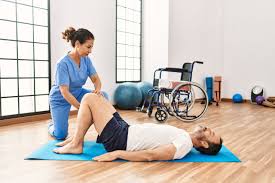Rotator cuff tears are a common concern among athletes and fitness enthusiasts, often causing pain and limiting mobility. The rotator cuff is a group of muscles and tendons that surround the shoulder joint, providing stability and enabling a wide range of motion. These muscles are frequently used in activities that require repetitive arm movements or heavy lifting, which increases their susceptibility to strain or injury.
What Causes Rotator Cuff Tears?
Rotator cuff tears can develop due to several factors, ranging from athletic movements to natural wear and tear. Overuse injuries are particularly common among athletes whose sports involve frequent overhead activities. Direct trauma, such as falling onto an outstretched arm or experiencing a sudden impact during contact sports, may result in a rotator cuff tear. These injuries typically occur suddenly and may be accompanied by acute pain and weakness.
The risk of rotator cuff injuries increases with age, as tendons naturally become less flexible and more prone to damage. Older individuals are more likely to experience degenerative rotator cuff injuries, especially if they lead an active lifestyle. Blood supply to the rotator cuff tendons also decreases as people age. This can hinder the body’s ability to heal minor injuries, eventually leading to tearing.
How Can One Prevent Them?
Preventing rotator cuff tears typically requires lifestyle adjustments. This includes a combination of proper technique and strengthening exercises. Below are practical steps individuals may follow to reduce the likelihood of injury:
- Warm Up Before Exercise: Engaging in a thorough warm-up routine before physical activity prepares the muscles for movement and reduces strain on the shoulder joint.
- Strengthen Shoulder Muscles: Regularly performing strength exercises that target the rotator cuff and surrounding muscles helps build resilience.
- Incorporate Stretching: Stretching improves flexibility and prevents stiffness in the shoulder joint.
- Listen to Your Body: Pay close attention to any signs of discomfort, pain, or fatigue. If you notice aches or reduced mobility, take a break or consult a healthcare professional.
By integrating these preventative measures into daily routines, individuals can significantly lower their chances of experiencing rotator cuff injuries while maintaining their fitness goals.
How Are They Treated?
Although prevention is always preferable, understanding treatment options is paramount if a rotator cuff tear occurs. Treatment strategies vary depending on the severity of the injury. Some treatment options may include the following:
- Rest and Activity Modification: For minor injuries, reducing activities that exert stress on the shoulder can facilitate healing.
- Physical Therapy: Physical therapy plays a key role in recovery from rotator cuff injuries. Therapists design personalized programs involving stretches, strength training, and mobility exercises to restore function and reduce pain.
- Medication: Nonsteroidal anti-inflammatory drugs (NSAIDs) are often prescribed to manage pain and inflammation.
- Surgery: Surgical intervention is generally reserved for severe or complete rotator cuff tears that cannot be managed through non-invasive methods.
Recovery times vary depending on the type and severity of the injury, so following a healthcare professional’s recommendations is key to achieving the best outcome.
When to Seek Medical Care
If you experience persistent shoulder pain, weakness, or difficulty performing regular activities, it may be time to consult a healthcare professional. Early evaluation and treatment can help prevent complications and improve the likelihood of a full recovery. The rotator cuff plays a significant role in maintaining shoulder function and mobility. By understanding the causes, preventative measures, and treatment options for rotator cuff injuries, fitness enthusiasts can make informed decisions to protect their joint health.
- FREHF – The Revolutionary Future Of Human-Centered Technology!
- Adsy.Pw/Hb3 – Boost Your SEO And Drive More Traffic!
- Fitness Based Vacations By Timeshealthmage.com!
- TimesHealthMag Tips For Improving Sleep Quality – Expert Advice For Better Rest!
- How TimesHealthMage Helps Improve Your Lifestyle Habits!


Leave a Reply